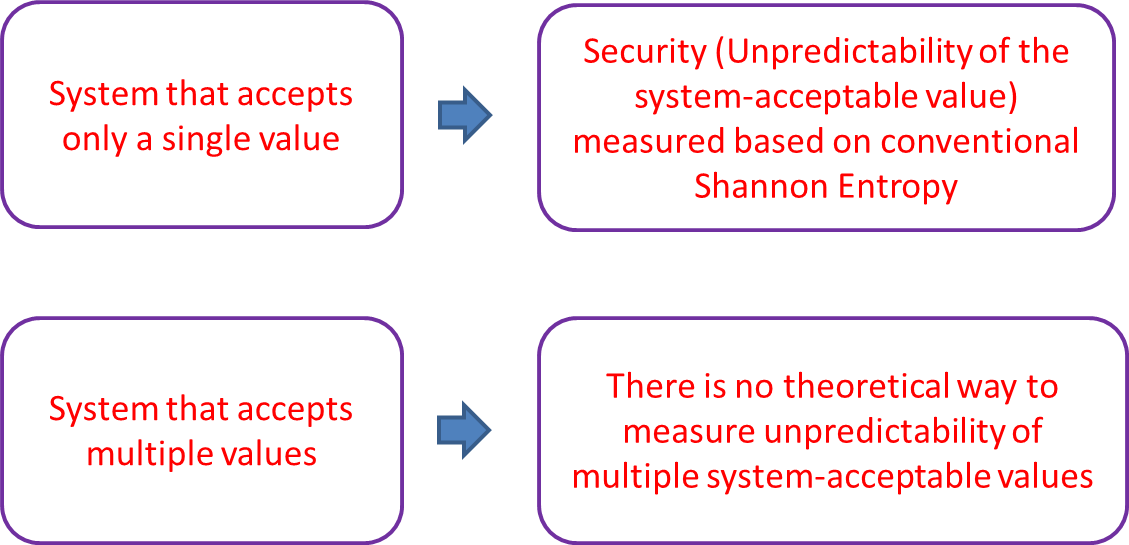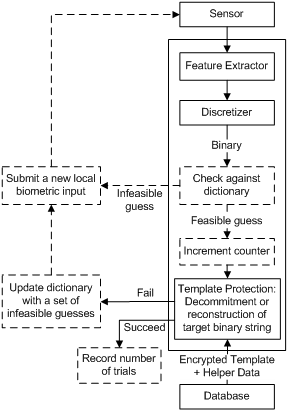| Projects > A Security Measure for Binary-Template-based Biometric System |
A Security Measure for Binary-Template-based Biometric SystemProject Team: Prof. YUEN, Pong Chi |
 |
Project Goal |
|
| The conventional Shannon entropy is useful in assessing the unpredictability of a random variable concerning single valid value. However, when multiple values are valid, this measure fails to provide reliable unpredictability quantification of the variable. In this project, we strive towards developing a measuring model to quantify the unpredictability of a system output when multiple binary outputs are acceptable. | |
Project Description |
|
|
Biometrics are often represented in binary, as binary biometric representation is the major acceptable form, if not the only, of input to various template protection schemes such as fuzzy commitment, fuzzy extractor, secure sketch, and helper data systems. Since biometric data are prone to non-trivial variations both inherently and due to imperfect measurement, this often causes users to be represented by multiple similar binary representations. To tolerate such intra-user variation for recovering the desired data exactness for matching, an error correction scheme with a system-specific error correcting capability (e.g., τ bits) is usually employed by a template protection scheme. As such, query codewords not more than τ bits away from the reference codeword will be recovered by the error correcting scheme and vice versa. Generally, the larger the error correcting capability τ is, the larger the number of binary measurements that a system could tolerate and the larger both true and false acceptance rate will be. To heighten the hardness of obtaining a correct guess for masquerade attack, it is essential to ensure that the binary biometric representation extracted from the discretization module of a biometric system is sufficiently unpredictable with reference to the range of binary codewords that are acceptable by the system (with decision threshold τ). More specifically, the security of a system should be maintained adequately high, such that, with the current computational capability, it would take nearly forever for an adversary to succeed in his guessing attack if he is going to perform an exhaustive search over the Hamming space for a binary template that is acceptable by the system. A reliable security measure is crucial because the above-mentioned security guarantees can only be achieved if the system security can be evaluated. However, conventional Shannon entropy could only measure the unpredictability of system output concerning a single but not multiple system-acceptable representation. Therefore, the conventional entropy measurement of biometric discretization output does not actually imply the hardness in obtaining a system-acceptable binary representation and thus the corresponding defense against a masquerade attack. |
|
 |
|
|
In this project, we put forward a measuring model to evaluate the security of binary representation-based biometric systems in the presence of a certain level of system tolerance. This developed model will not only enable a quantification of biometric system security and predictability gain (entropy loss) with respect to the system threshold, but also allows precise configuration of system parameters in achieving a specific security level. |
|
 A framework for guessing the reference binary representation of the target user, where the system security can be reflected by the recorded number of trials. |
|
| For further information on this project, please contact Prof. YUEN, Pong Chi. | |
